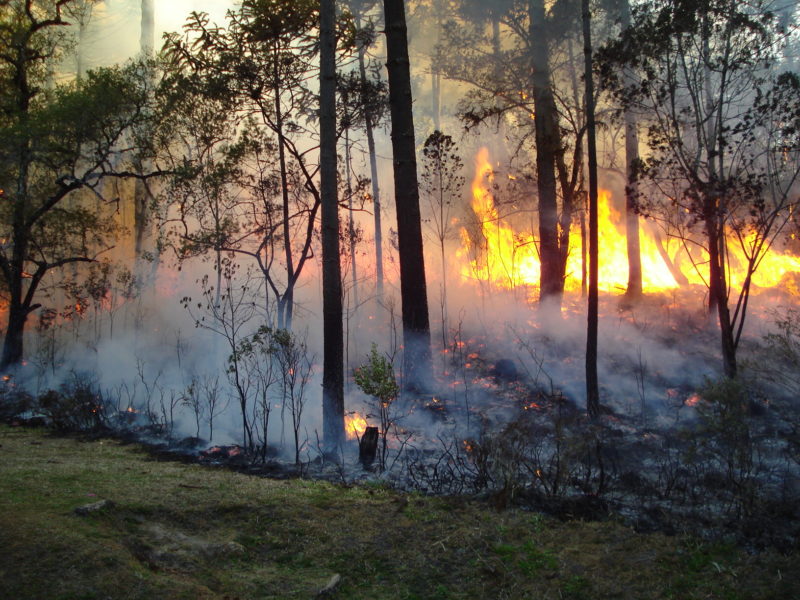In recent months, large areas of the Amazon rainforest have suffered from an increase in illegal deforestation. According to data from the Amazon Institute of Man and Environment (Instituto do Homem e Meio Ambiente da Amazônia – Imazon), May 2021 was the third consecutive month with the largest deforestation in the Amazon in 10 years. The Deforestation Alert System (Sistema de Alerta de Desmatamento – SAD) detected a total area of 1,125 square kilometers deforested in the Legal Amazon in May, which is equivalent to a 70% increase over the same month in 2020, when the deforested area was 660 square kilometers.
The Climate Leaders Summit, an event organized by the United States, took place on April 22 and 23, 2021, with the participation of 40 world leaders. The objective was to discuss and propose strategies to reverse the climate crisis. According to a report by the Ministry of the Environment (Ministério do Meio Ambiente – MMA, 2021), Brazil has committed to a 37% reduction in Greenhouse Gas (GHG) emissions by 2025, increasing to 43% by the year 2030, in addition to “anticipating climate neutrality” by 2050.
The MMA report states that Brazil has one of the cleanest energy matrices in the world. In addition, it mentions President Jair Bolsonaro’s speech on environmental initiatives that have been structured since 2019, such as the Floresta+ program, and the announcement of the plan to end illegal deforestation by 2030. At the event, Brazil expressed interest in increasing the Amazon’s prosperity via sustainable development through bioeconomy.
However, since 2019, deforestation rates in the Legal Amazon have been growing. According to data from the PRODES project, which monitors by satellite and discloses annual deforestation rates in the region, the variation in rates from 2018 to 2019 was around 34%, the highest since 2008. The PRODES project is an important system for actions and planning of public policies in the Amazon, which does count on the collaboration of the Ministry of the Environment.
According to a publication by the Foundation for Research Support of the State of São Paulo (Fundação de Amparo à Pesquisa do Estado de São Paulo – FAPESP, 2021), researchers participating in the “Nationally Determined Contribution (NDC) Webinar in Brazil: goals in strategic sectors – forests, agriculture and energy” pointed out that conversion from forests in pastures in the Amazon biome has become the main source of GHG emissions in the country since 2017.
During the event, Ane Alencar, a researcher at the Amazon Environmental Research Institute (Instituto de Pesquisa Ambiental da Amazônia – IPAM), pointed out that 94% of gross emissions from changes in land use in 2019 were due to deforestation, with 87% being in the Amazon. Alencar also drew attention to the increase in deforestation on other public lands not subject to formal protection. Rural Environmental Registry (Cadastro Ambiental Rural – CAD) records indicate that about 57 million hectares of forests, representing around 14% of the biome’s extension, were lost during that year.
In addition, researchers participating in the Webinar stated that the GHG reduction targets established for the country are not very ambitious and are insufficient to effect meaningful benefits, as they are easily achieved, even while maintaining the current rates of deforestation in the Amazon. This implies that Brazil is sending contradictory messages regarding its actual interests in reducing GHG emissions and putting an end to illegal deforestation in the Amazon.
Atlanta, August 9, 2021
By L. Pinto and A.C.V. Freitas
REFERENCES
ALISSON, Elton. Aumento do desmatamento na Amazônia põe em risco metas climáticas do Brasil. Agência FAPESP, São Paulo, maio 2021. Disponível em: <https://agencia.fapesp.br/aumento-do-desmatamento-na-amazonia-poe-em-risco- metas-climaticas-do-brasil/35867/>. Acesso em: 8 jul. 2021.
Imazon. Desmatamento na Amazônia foi o maior em 10 anos pelo terceiro mês consecutivo, divulga Imazon: Área desmatada em maio de 2021 chegou a 1.125 km2, quase do tamanho do município do Rio de Janeiro. Imazon. 2021. Disponível em: <https://imazon.org.br/imprensa/desmatamento-na-amazonia-foi-o-maior-em-10-anos- pelo-terceiro-mes-consecutivo-divulga-imazon/>. Acesso em: 8 jul. 2021.
Ministério do Meio Ambiente. Brasil participa da Cúpula de Líderes Sobre o Clima: Presidente da República Jair Bolsonaro anunciou novas metas para o Brasil. Governo Federal. 2021. Disponível em: <https://www.gov.br/mma/pt-br/assuntos/noticias/brasil- participa-da-cupula-de-lideres-sobre-o-clima>. Acesso em: 8 jul. 2021.
PRODES, Coordenação-Geral de Observação da Terra/INPE, 16 jun. 2021. Disponível em: <http://www.obt.inpe.br/OBT/assuntos/programas/amazonia/prodes>. Acesso em: 8 jul. 2021.

